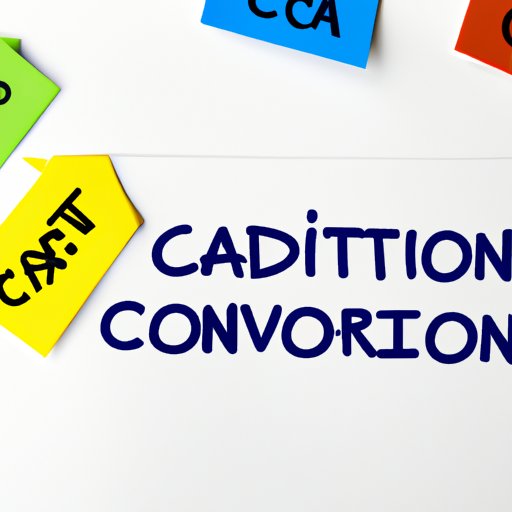
Introduction
Every business, no matter the size or industry, wants to improve their conversion rates. After all, the more conversions you have, the higher your revenue potential. One of the most effective tools for improving conversion rates is the call-to-action (CTA). CTAs are a vital component of any marketing strategy, but not all CTAs are created equal. This article will break down the anatomy of a successful CTA, provide tips for creating effective call-to-action strategies, and offer real-world examples of companies that have greatly benefited from the power of CTA. Let’s take a closer look.
The Power of CTA in Marketing: How to Boost Your Conversion Rates
Before diving into CTA strategies, let’s first define what a conversion rate is. In marketing, conversion rate refers to the percentage of people who take a desired action after viewing a piece of content or receiving a marketing message. This action could be anything from making a purchase to filling out a contact form. Conversion rates are important because they directly impact a business’s bottom line.
So how can CTA help improve conversion rates? A well-crafted CTA encourages potential customers to take action and move further down the sales funnel. It provides a clear and concise instruction on what the viewer should do next, whether it’s to sign up for a free trial, learn more about a product, or make a purchase. Companies such as Airbnb, Dropbox, and HubSpot have greatly benefited from the power of CTAs and continuously test and refine their CTA strategies to increase conversions.
CTA Marketing: A Beginner’s Guide to Call-to-Action Strategies
Now that we know why CTA is important, let’s dive into some call-to-action strategies. First, it’s important to understand what a call-to-action is. A call-to-action is a clear and direct prompt for a viewer to take some type of action. It differs from other marketing techniques in that it is intended to inspire an immediate response. This is why call-to-action strategies should be a part of every marketing campaign.
So how can you create effective call-to-action strategies that are tailored to your business? First, it’s important to identify your business objectives. Do you want to increase sales, generate leads, or drive traffic to your website? Once you identify your objectives, you can create a clear and concise CTA that will drive viewers to take action.
Why CTA is Vital for Your Marketing Campaign and How to Effectively Use It
In addition to improving conversion rates, a well-executed CTA has many benefits for a business. It can increase engagement, improve brand recognition, and help establish a relationship with potential customers. However, businesses often make common mistakes when creating CTA strategies, such as using vague language or overcomplicating the messaging. To effectively harness the power of CTA, businesses should follow best practices such as using action-oriented language, using contrasting colors to make the CTA stand out, and placing the CTA in a prominent location on the page.
The Anatomy of a Successful CTA in Marketing: Tips and Examples
Now let’s break down the key elements of a successful CTA. A successful CTA has clear and concise copy that specifies exactly what the viewer should do, such as “Sign Up Now” or “Download Your Free Guide.” It also includes effective design elements, such as contrasting colors and eye-catching graphics. Other factors to consider when creating a successful CTA include the placement on the page, the framing and context of the CTA, and the messaging and tone used in the copy. Real-world examples of well-executed CTA marketing campaigns include Mailchimp’s “Sign Up Free” button and HelloFresh’s “Get Started” prompt.
CTA Marketing: The Secret to Getting Your Audience to Take Action
The ultimate goal of CTA marketing is to encourage audiences to take important actions, whether it’s to make a purchase, sign up for a newsletter, or fill out a contact form. One way to effectively leverage CTA is to focus on framing, context, and timing. For example, framing a CTA as a limited-time offer or using social proof can increase its effectiveness. Additionally, businesses should ensure that their website is optimized for engagement by using clear and concise language and providing a seamless user experience.
Conclusion
CTA is a vital tool for any business looking to improve conversion rates and audience engagement. By creating effective call-to-action strategies and following best practices, businesses can see significant improvements in their bottom line. Remember to keep the messaging clear and concise, use contrasting colors and eye-catching design elements, and provide a seamless user experience. With these tips and real-world examples, you can start experimenting with CTA marketing in your own campaigns today.




